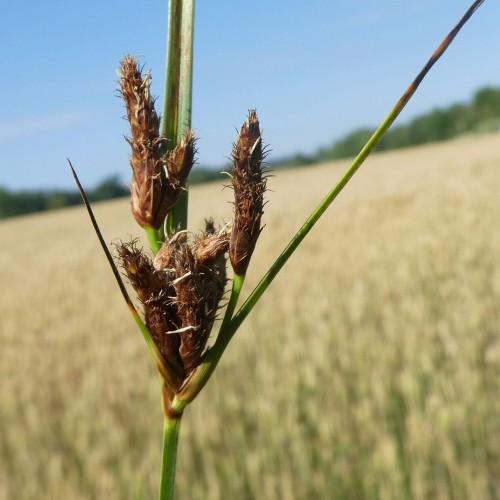
Saltmarsh Bulrush
Bolboschoenus maritimus subsp. maritimus
Watering:
Minimal
Hardiness Zone:
Sun:
full sun,part shade
Growth Rate:
Low
Drought Tolerant:
Yes
Salt Tolerant:
Yes
Invasive:
Yes
Care Level:
Moderate
watering
The Tuberous Bulrush should be watered moderately, allowing the moist soil to dry out slightly between waterings. It should be watered approximately once a week, depending on the event of sunlight, temperature, soil type, and rainfall. For best growth, water the plant deeply when the top layer of soil is dry. Soil should remain evenly moist but not soggy, and avoid overwatering.
sunlight
Tuberous Bulrush (Bolboschoenus glaucus) is a native plant species that grows in wetlands of North America. It thrives best in moist soils in shallow water or where flooding occurs frequently. In more dry soils, this species can tolerate some drought conditions. To get the best growth, this species needs full sunlight for at least 6 hours a day during the growing season. The ideal time of day for this species to receive sunlight is midday when the strongest and most direct rays of sunlight are available. Additionally, the warmer months provide the optimal amount of light for growth, and the plant should be supplied with light every day from early spring through fall.
pruning
Tuberous Bulrush (Bolboschoenus glaucus) should be pruned in late winter to early spring each year. Pruning should be done each year either by cutting flowering stems off 2 inches above the base or by mowing. If you choose to mow, it's best to wait until the plant is completely dormant and the foliage has died down. It's important to only remove up to 1-third of the total height of the plant each year as this helps to retain an attractive shape. This will help keep the Bulrush healthy and free of disease and pests.
